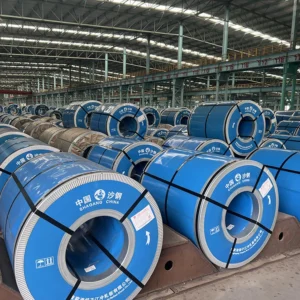Global Electrical Steel Industry News: Market Growth, Technological Shifts, and Regional Demand
The global electrical steel market is undergoing significant transformation, driven by rapid industrial electrification, renewable energy expansion, and increased demand from electric vehicle manufacturers. Electrical steel, a specialty alloy known for its superior magnetic properties, is essential in the manufacturing of transformers, motors, and generators that form the backbone of modern energy infrastructure.
As of 2025, major players across Europe, the Middle East, and Asia are investing in new production capacities and technology upgrades to meet the surging demand. This article explores recent developments shaping the global electrical steel landscape and what stakeholders in the industry should be paying attention to.
Market Overview and Forecast
According to recent reports, the global electrical steel market is expected to exceed USD 45 billion by 2030, growing at a CAGR of approximately 6.5%. This growth is largely fueled by the rising consumption of electrical energy, smart grid initiatives, and a global push toward energy efficiency and carbon neutrality.
Europe remains a key market, with Germany, France, and Italy increasing their imports of high-grade electrical steel for wind turbines and next-generation power transformers. Meanwhile, Middle Eastern countries like Saudi Arabia and the UAE are rapidly developing utility-scale solar and smart grid infrastructure, further increasing their regional demand for electrical steel.
Asia-Pacific continues to dominate supply, with China, Japan, and India leading in both raw material processing and finished product exports. However, trade dynamics are shifting due to new tariffs, ESG pressures, and technological competitiveness from European manufacturers.
Technological Advancements
Manufacturers are focusing on innovations in electrical steel processing, including laser scribing, thin gauge rolling, and domain refinement techniques. These advances aim to reduce core losses and improve magnetic performance, which are critical for achieving higher energy efficiency.
Non-grain-oriented (NGO) electrical steel, in particular, is seeing increased use in EV drive motors and energy-efficient industrial machinery. Meanwhile, grain-oriented (GO) steel remains dominant in power transformers due to its directional magnetic properties.
Several European and Korean steel producers have announced breakthroughs in producing ultra-thin electrical steel for high-speed electric motors. These materials are now being tested in aviation electrification and high-frequency power electronics applications.
The race to produce next-generation electrical steel with near-zero loss is also heating up. Companies are investing in AI-powered process control, green hydrogen annealing, and decarbonized steelmaking technologies to meet regulatory and consumer sustainability expectations.
Regional Developments
Europe:
The European Commission’s Green Deal has prompted power utilities to upgrade their grids with low-loss transformers, boosting the demand for high-grade electrical steel. Several EU-funded research initiatives are focusing on recycling and circular economy models for electrical steel components.
Middle East:
The Middle East is emerging as both a consumer and potential regional producer. With megaprojects like NEOM in Saudi Arabia and Dubai’s Smart Grid 2035 plan, the region’s electrical steel needs are diversifying beyond traditional energy to include smart homes, mobility, and digital infrastructure.
North America:
The U.S. Inflation Reduction Act (IRA) has indirectly stimulated demand for domestically sourced electrical steel, especially for EV production and renewable energy installations. New investments are being made in electrical steel re-rolling mills across the Midwest and Southeast U.S.
Asia:
China has recently restricted some exports of critical materials used in electrical steel production, potentially altering global supply chains. Meanwhile, Japan and South Korea continue to push for ultra-efficient steel grades for industrial robotics and high-speed rail systems.
Supply Chain and ESG Considerations
Supply chain resilience has become a major focus post-pandemic. Many electrical steel buyers are diversifying sourcing and implementing digital traceability systems to ensure quality and compliance with environmental standards.
Environmental, Social, and Governance (ESG) performance is now a competitive factor in the electrical steel industry. Leading manufacturers are publishing transparent emissions data and investing in carbon-neutral production methods. Buyers, especially in Europe, are increasingly selecting vendors based on sustainability certifications and life-cycle analysis.
Challenges and Opportunities
While demand for electrical steel is rising, the industry also faces challenges such as volatile raw material prices, geopolitical trade restrictions, and a shortage of skilled labor in mill operations. Nonetheless, these challenges open opportunities for automation, AI integration, and international collaboration on standardization and recycling.
Start-ups and research labs are entering the space with new coatings, magnetics modeling tools, and eco-friendly insulation techniques. These developments could redefine how electrical steel is used in future applications, from autonomous vehicles to decentralized power grids.
Conclusion
The electrical steel industry is not only expanding but also evolving in complexity. As energy systems become more intelligent and electrified, the role of electrical steel will grow more critical than ever. Staying ahead requires a deep understanding of market dynamics, technological innovation, and global supply strategies.
Stakeholders—from utilities to automotive OEMs and policy makers—must monitor these shifts closely to ensure competitiveness and resilience in a rapidly transforming energy economy.




